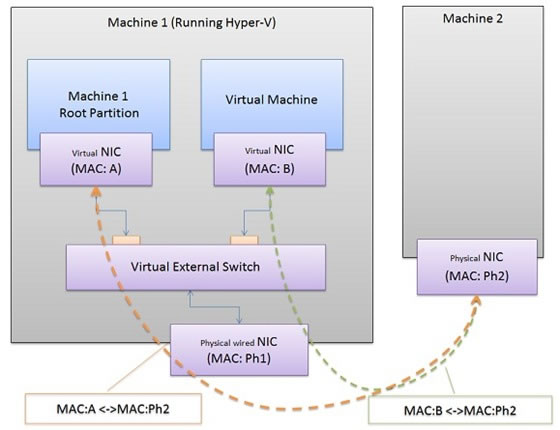Microsoft has announced that one or more versions of Windows 8 client will ship with the company's Hyper-V virtualization software. Previously limited to Windows Server 2008 and 2008 R2, Hyper-V allows users to run multiple operating systems simultaneously on the same computer, a functionality end users have been forced to seek in third party software such as VirtualBox and VMWare's products.
Hyper-V relies on Second Level Address Translation (SLAT), a feature present in AMD and Intel's latest 64-bit processors, and will take Windows 7's "XP Mode" to the next level by introducing virtualization support for all 32- and 64-bit operating systems – not just Microsoft's decade-old platform.
Intel's SLAT technology (called Extended Page Table or EPT) was introduced with the Nehalem architecture in November 2008, while AMD's flavor (dubbed Rapid Virtualization Indexing or RVI) launched with its Barcelona-based third-generation Opteron processors in the third quarter of 2007.
Networking VM and external machine via wired connection

To use Hyper-V, you'll need a 64-bit version of Windows 8 along with 4GB or more of system memory to run between one and four virtual machines. You'll need more RAM run five or more operating systems. It's worth noting that each instance will still require you to purchase a separate license.
As noted, Hyper-V supports 32- and 64-bit guest operating systems (including Linux, we hope) which can be configured to use up to 32 CPUs and 512GB of RAM. Among the software's features is dynamic memory allocation, which lets your virtual machine allocate and de-allocate RAM as necessary.
You'll view Hyper-V-powered operating systems through one of two portals: the VM Console or the Remote Desktop Connection. The former supports one display at up to 1600x1200 while the latter takes full advantage of your hardware with support for multiple monitors, touch interfaces and more.
There's a plethora of additional details in Microsoft's official blog post if you're interested. In case you missed it, last week Redmond announced that Windows 8 would have native support for mounting ISO and VHD files. The company's latest OS is due to hit beta later this year and will launch late next year.